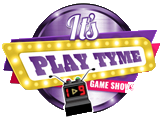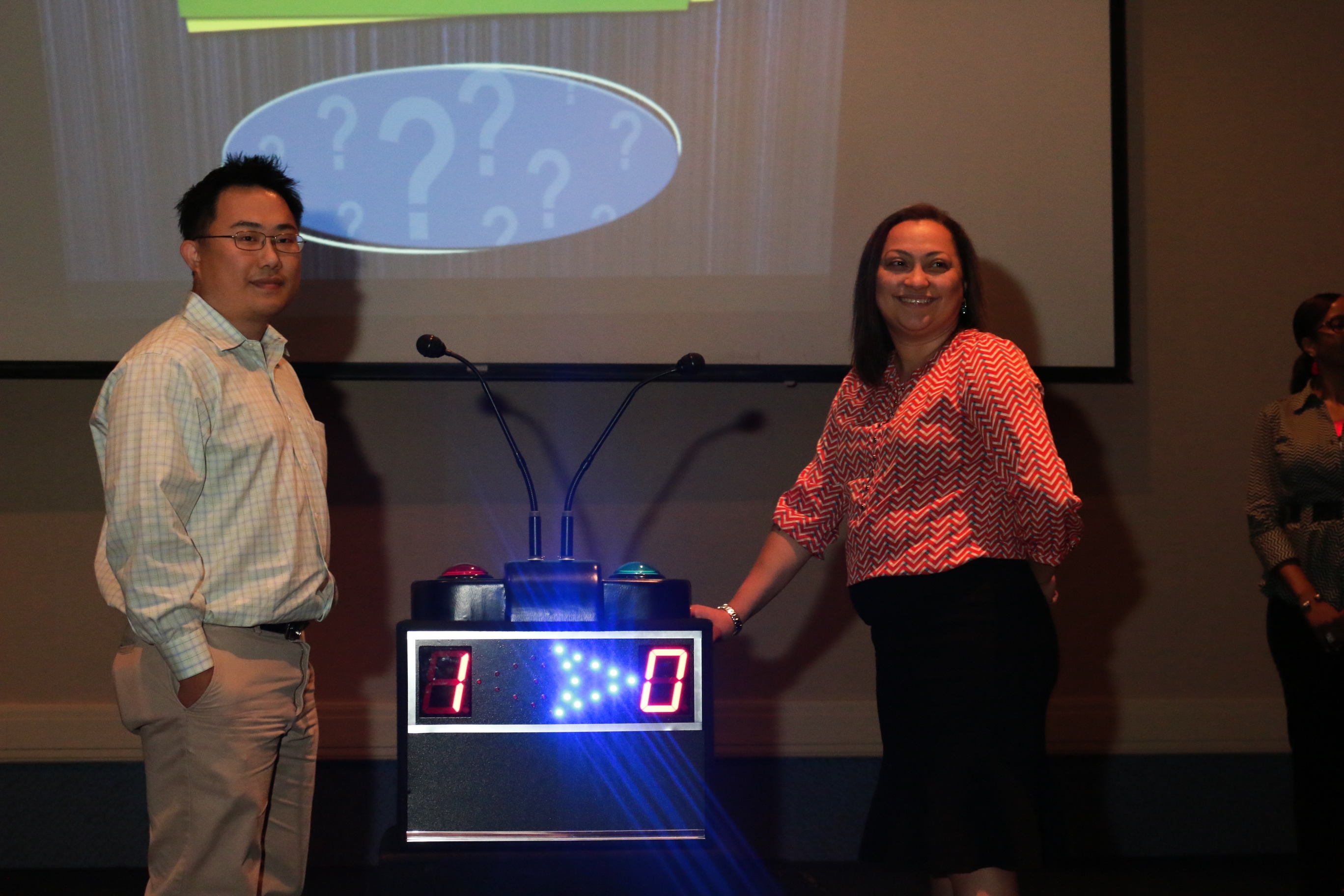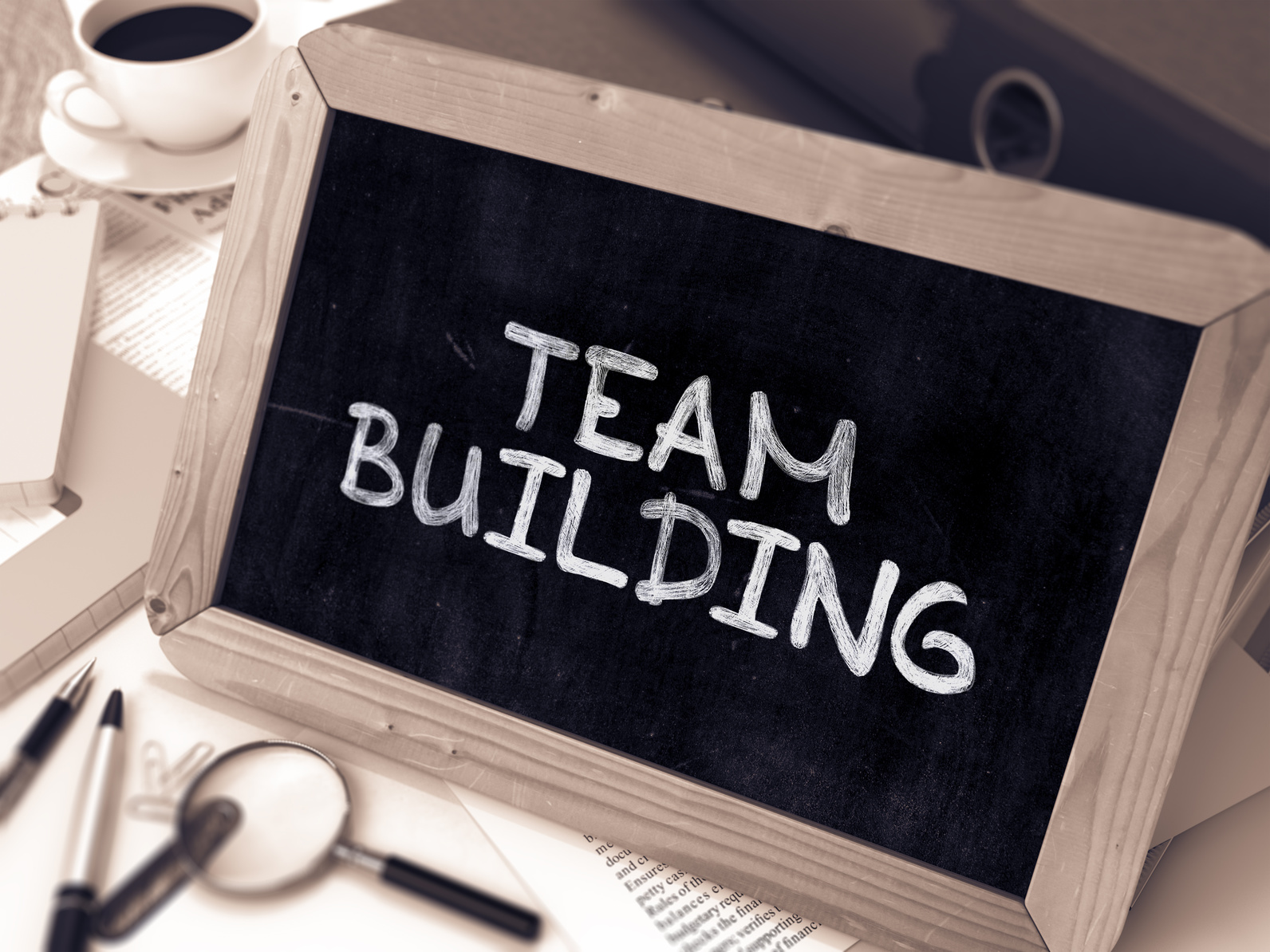Did you know that companies with a great company culture report four times higher revenues than other organizations? According to Forbes, this is achieved by encouraging team bonding between all group members. In today’s fast-paced work environment, building a cohesive team is crucial for success. A study by Harvard Business Review found that group bonding activities for large groups improve communication patterns by 50%. Moreover, research by Gusto revealed that 55% of employees in large companies don’t know their coworkers. This highlights the need for effective team-building activities that foster a positive work environment.
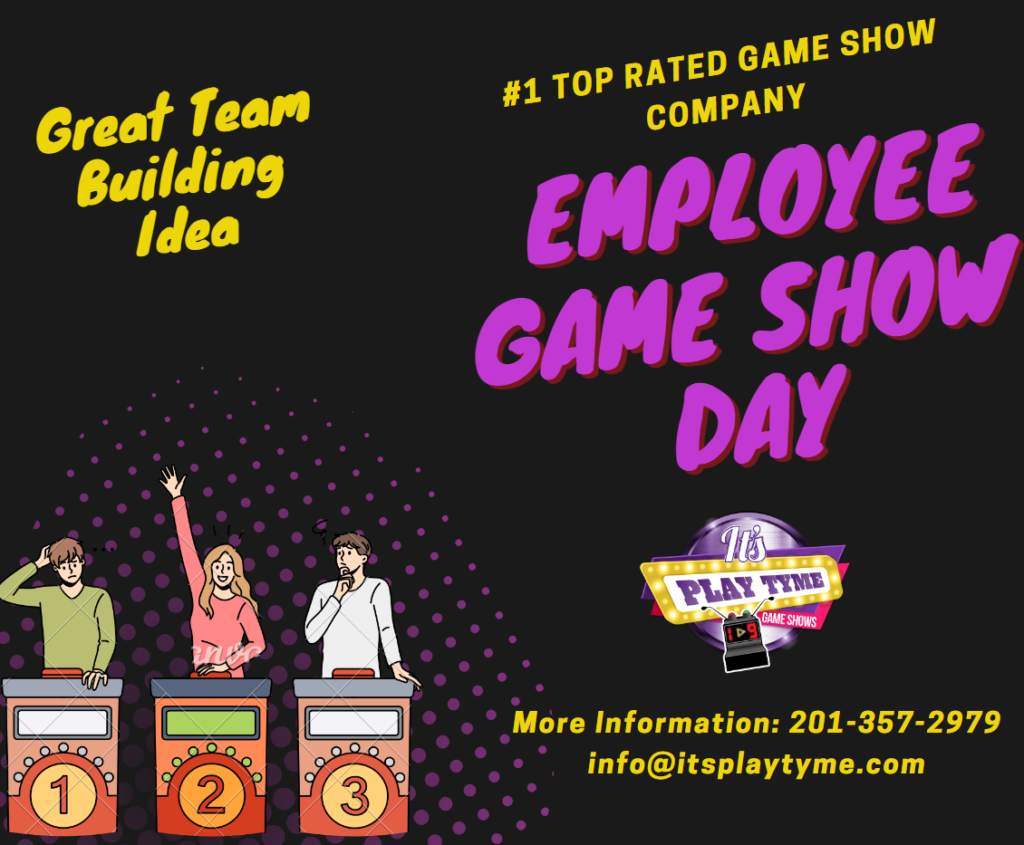
employee-engagement-game-show-idea
Key Takeaways – Bonding Activities For Large Groups
- Effective team building is crucial for a positive work environment and company culture.
- Team-building activities improve communication and collaboration among employees.
- Choosing the right activities can be challenging, but it’s worth the effort for improved team cohesion.
- This guide explores various team-building options suitable for large groups.
- Team building can be adapted to different settings, including in-person and virtual events.
Why Large Group Team Bonding Matters
The importance of team building in large groups cannot be overstated, as it directly impacts teamwork and overall performance. In today’s fast-paced business environment, large teams are common, and managing them effectively is crucial for success.
The Challenge of Managing Large Teams
Managing large teams presents unique challenges, including communication barriers and difficulty in fostering personal connections among team members. According to Gallup, productivity in larger groups can decline up to 20% due to isolation. Large organizations often struggle with employee isolation, which can lead to decreased productivity and engagement if not addressed proactively.
- Communication barriers hinder effective collaboration.
- Difficulty in fostering personal connections among team members.
- Employee isolation leads to decreased productivity.
The Impact of Team Building on Company Culture
Team-building activities serve as a strategic solution to these challenges by creating shared experiences that break down departmental barriers and hierarchy. The impact of effective team building on company culture is significant, creating a more collaborative environment where employees feel valued and connected to the organization’s mission.
Statistics on Team Building Success
Statistical evidence supports the business case for team building, with studies showing improvements in communication patterns, problem-solving abilities, and overall productivity when teams participate in structured bonding activities. Effective team building enhances collaboration and productivity, making it a valuable investment for large organizations.
Key Benefits of Bonding Activities for Large Groups
The benefits of bonding activities for large groups are multifaceted, impacting various aspects of team performance.
By engaging in these activities, large groups can experience significant improvements in teamwork, collaboration, and overall team cohesion.

Improved Communication and Collaboration
Bonding activities for large groups create opportunities for team members to practice communication in a low-stakes environment. This helps develop skills that transfer to workplace collaboration, enhancing overall team performance. When team members learn to communicate effectively, they are better equipped to handle challenges and work together more efficiently.
Enhanced Problem-Solving Skills
When diverse team members work together on challenges outside their normal job functions, they develop enhanced problem-solving skills and learn to appreciate different perspectives.
This diversity in problem-solving approaches can lead to more innovative solutions and a more adaptable team.
- Team members learn to rely on each other’s strengths.
- Diverse perspectives lead to more comprehensive problem-solving.
- Enhanced collaboration results in more effective solutions.
Increased Employee Engagement and Morale
Employee engagement significantly increases when team members feel connected to their colleagues. Bonding activities create memorable shared experiences that foster this connection, leading to a more engaged and motivated workforce. As a result, teams become more productive and committed to their work.
“Teamwork makes the dream work.” This old adage holds true, especially in large groups where diverse talents and perspectives come together. By fostering a sense of unity and cooperation, bonding activities can significantly boost morale and productivity.
Stronger Team Relationships and Trust
Trust is the foundation of effective teams, and structured bonding activities create safe spaces for vulnerability and authentic connection that build this essential element. As team members build trust, they are more likely to collaborate effectively, share ideas, and support one another in their work.
By incorporating bonding activities into their team-building strategy, organizations can reap the benefits of a more cohesive, collaborative, and productive team. These activities not only enhance team dynamics but also contribute to a positive and supportive work environment.
How to Choose the Right Bonding Activities for Large Groups
To ensure a productive and enjoyable team-building experience for large groups, careful consideration must be given to the choice of activities. The success of a team-building event depends on various factors, including the size of the group, the objectives of the event, and whether the team is in-person or virtual.
Defining Your “Large Group” Size
The first step in selecting appropriate bonding activities is clearly defining what constitutes a “large group” in your specific context. The number of participants in large groups can range from 50 to 500 team members or more. Activities suitable for 50 people may not work for 500, so it’s essential to understand your group size to choose the right activities.
For instance, smaller groups can engage in quick and straightforward games like board games or quizzes. However, as the group size increases, the complexity and scale of the activities need to be adjusted accordingly.
Setting Clear Objectives for Your Team Building Event
Establishing clear objectives for your team-building event is crucial as it guides your activity selection. Whether you’re focusing on improving communication, enhancing problem-solving skills, or simply building relationships, your objectives will help you choose the most suitable activities.
For example, if your goal is to improve communication, you might opt for activities that encourage collaboration and interaction among team members.

In-Person vs. Virtual Considerations
The decision between in-person and virtual team-building activities depends on your team’s composition. For remote teams, specially designed virtual experiences are necessary to achieve the same benefits as in-person activities.
In-person activities can foster a sense of camaraderie and shared experience, while virtual activities can provide flexibility and inclusivity for remote teams.
Planning Timeline and Logistics
Logistical considerations become increasingly important as group size grows. Factors such as venue capacity, material requirements, and facilitation needs require careful planning to ensure a smooth execution of the event.
Creating a detailed timeline for both planning and execution is essential. Adequate time should be allocated for setup, instructions, the activity itself, and debriefing to ensure that the event runs smoothly and achieves its objectives.
Quick and Easy Icebreakers for Large Teams
Icebreaker activities are essential for large groups, helping to establish a connection among team members. These activities are particularly useful when introducing new members or bringing together departments that don’t regularly interact. By facilitating personal connections and encouraging collaboration, icebreakers set the stage for more effective teamwork.
Several icebreaker activities are well-suited for large teams, each offering a unique way to foster engagement and camaraderie. Here are a few examples:
Two Truths and a Lie
This game encourages personal sharing in a fun, low-pressure format. Participants share two true statements about themselves and one false statement, and their colleagues have to guess which one is the lie. This activity helps team members discover unexpected commonalities and interesting facts about their colleagues.
The One-Word Game
The One-Word Game provides a quick yet insightful glimpse into how team members perceive various aspects of work. By asking participants to describe their feelings or thoughts about a particular topic with just one word, this game creates opportunities for deeper discussion and understanding among team members.
Birthday Lineup
Birthday Lineup is an engaging activity that combines physical movement with non-verbal communication challenges. Participants start by standing side-by-side and then re-arrange themselves in order of their birthdays without speaking. This activity forces team members to develop alternative ways to collaborate and communicate.
Group Map
Group Map creates a visual representation of team diversity by having members position themselves according to their geographic origins. This activity sparks conversations about cultural backgrounds and experiences, promoting a richer understanding among team members.
| Icebreaker Activity | Description | Benefits |
|---|---|---|
| Two Truths and a Lie | Share two true statements and one false statement about yourself. | Encourages personal sharing, discovers commonalities. |
| The One-Word Game | Describe a topic with one word. | Provides insight into team perceptions, fosters discussion. |
| Birthday Lineup | Line up in order of birthdays without speaking. | Promotes non-verbal communication, teamwork. |
| Group Map | Position yourself according to geographic origin. | Highlights team diversity, sparks cultural conversations. |
Problem-Solving Bonding Activities for Large Groups

Large teams benefit significantly from problem-solving activities that foster unity and creative thinking. These activities are designed to push teams to think outside the box and work collaboratively towards a common goal, directly translating to improved workplace challenges.
Some effective problem-solving bonding activities for large groups include:
Marshmallow Challenge
The Marshmallow Challenge, developed by Tom Wujec, involves giving team members 20 sticks of spaghetti, one marshmallow, one yard of string, and tape. The task is to build the tallest free-standing structure, testing teams’ ability to work together using limited materials. This activity reveals insights into leadership dynamics and team communication patterns.
Egg Drop Challenge
The Egg Drop Challenge is another engaging activity that can be played by dividing 50 to 100 people into big groups. Teams must build a safe landing pad using provided materials and then drop an egg into it to see if it survives the fall. This challenge combines engineering principles with resource constraints, forcing teams to protect a fragile object.
Perfect Square
In the Perfect Square activity, blindfolded team members are asked to form a perfect square using only a rope and verbal communication. This task highlights the importance of clear instructions and feedback within a team.
These problem-solving activities not only reveal natural leaders, creative thinkers, and effective communicators within a team but also create a shared experience that bonds participants through collective achievement.
Creative Team Building Activities for Large Groups

When it comes to large teams, creative team-building activities can be a game-changer. These activities tap into different skills than traditional problem-solving exercises, allowing team members who excel in artistic expression to shine.
Creative team-building activities are designed to foster collaboration, unity, and cooperation among team members. They provide a unique opportunity for people to come together, share ideas, and build stronger relationships.
Coat of Arms
The Coat of Arms exercise is a creative way for participants to introduce themselves and their colleagues. It invites participants to create personal emblems representing their values, achievements, and characteristics, providing deeper insights into colleagues’ identities beyond their job roles.
Team Beats
Team Beats is an energizing and rhythmic activity designed for large group activities. Participants collaborate to create music using a variety of percussion instruments, requiring synchronization, active listening, and coordination to create rhythmic harmony.
Doodling Together
Doodling Together is a fun and creative game where the group gets to collaboratively draw postcards through a series of instructions. This activity creates a collaborative art experience where team members build upon each other’s work, demonstrating how individual contributions combine to create something greater than the sum of its parts.
These creative activities often reveal hidden talents and interests among team members, creating new appreciation for colleagues’ diverse abilities and fostering respect across the organization.
Outdoor Bonding Activities for Large Groups
Nature provides a unique backdrop for large groups to bond through outdoor activities. Outdoor bonding activities leverage natural environments to create memorable experiences that strengthen team relationships while providing a refreshing break from office settings.

Scavenger Hunt Bonding Activities for Large Groups
Scavenger hunts transform cities or outdoor spaces into interactive playgrounds where teams must collaborate to solve clues and complete challenges within a set timeframe. This activity is particularly effective for large groups as it encourages teamwork, problem-solving, and communication.
Camping Experience
Camping experiences remove teams from technological distractions and workplace hierarchies, creating authentic connections through shared responsibilities and natural challenges. Engaging in outdoor team-building activities centered around connecting with nature provides significant advantages to team members of large organizations.
Sports Tournament
Sports tournaments combine physical activity with friendly competition, allowing team members to demonstrate different skills while building camaraderie through shared athletic experiences. Organizing a mini-sport tournament is a great way to divide large groups of people into different teams – they can even select their team’s name and anthem!
Outdoor team-building activities are an excellent way to foster a sense of unity and cooperation among team members. By engaging in these activities, large groups can improve their communication, problem-solving skills, and overall team dynamics.
Competitive Team Building Games for Large Groups

Energizing large groups with competitive team-building games is a great strategy. These activities harness natural competitive instincts to energize large groups while teaching important lessons about sportsmanship and collaboration.
Rock, Paper, Scissors Tournament
The Rock, Paper, Scissors Tournament is a fun and loud energizer game where people play against each other in pairs until the first win. Instead of eliminating the losing players, they become fans of the winner, creating an increasingly energetic atmosphere.
Survivors Game
The Survivors Game is one of the best team-building activities for large groups, accommodating over 100 individuals. Inspired by the popular TV show, it challenges teams with physical and mental tests that require strategic thinking and teamwork to overcome.
Carnival Games
Carnival Games offer a vibrant and entertaining way to engage large groups in various fun and competitive challenges. By setting up multiple activity stations, team members can showcase different skills and abilities in a lighthearted, competitive environment.
The key to successful competitive activities is balancing healthy competition with collaborative elements, ensuring that the focus remains on team building rather than individual achievement. By incorporating these games into your team-building events, you can create a more cohesive and engaged team.
Collaborative Bonding Activities for Large Groups
When it comes to large groups, collaborative team-building activities can make a significant difference in promoting unity and cooperation. These activities are designed to foster a sense of teamwork and collaboration among team members, helping them work together more effectively.
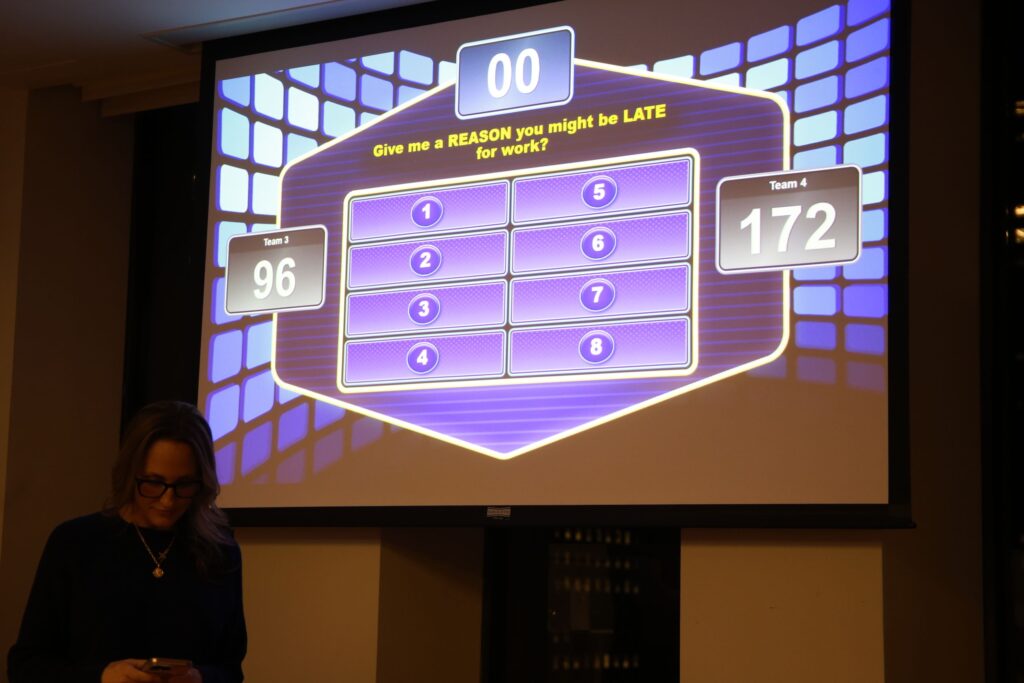
feud work question sudden death round
Bridge Build
Bridge Build is a strategic and collaborative activity designed for large groups. Participants work together to construct a bridge using limited materials, focusing on teamwork, creativity, and problem-solving. This activity challenges teams to construct a functional bridge, requiring strategic planning, role assignment, and effective communication.
Tower of Strength
Tower of Strength is an engaging and competitive activity where large groups are challenged to build the tallest freestanding tower using limited materials. This activity tests teams’ ability to build a strong foundation and demonstrates how careful building techniques lead to sustainable results.
Helium Stick
The Helium Stick activity presents a deceptively simple challenge where team members must lower a lightweight rod to the ground while maintaining contact with it. This activity reveals counterintuitive lessons about coordination and gentle pressure, emphasizing the importance of teamwork and collaboration.
These collaborative bonding activities emphasize the importance of working together toward a common goal, reinforcing the idea that team success depends on every member’s contribution. By engaging in these activities, large groups can develop a stronger sense of unity and cooperation, leading to improved teamwork and collaboration in the workplace.
Virtual Team Building Activities for Large Remote Teams

Virtual team-building activities are revolutionizing the way large remote teams interact and collaborate. As organizations continue to adopt remote or hybrid work models, the need for effective virtual team building has become more pressing than ever.
These activities provide a platform for remote teams to connect, build trust, and enhance their collaboration skills, regardless of their physical location. Some popular virtual team-building activities include immersive digital experiences that challenge teams to work together to achieve common goals.
Immersive Virtual Experiences
Virtual Escape Rooms are an excellent example of immersive virtual experiences. In these activities, teams work together to find clues and solve puzzles within a set time limit. This activity is particularly engaging, as it can be tailored to specific themes or holidays, adding a unique touch to the experience. Virtual Escape Rooms are suitable for group sizes ranging from 50 to 100 players.
Competitive Team Challenges
Another exciting virtual team-building activity is the Virtual Squid Game, inspired by the popular Netflix series. This friendly competition involves two teams working together to overcome challenges that test their skills and abilities. The activity can be adapted for both in-person and remote teams, supporting over 200 participants.
Relaxed Social Gatherings
Virtual Happy Hours offer a more relaxed setting for team bonding. These virtual gatherings often incorporate structured activities or themes to facilitate conversation among remote colleagues, helping to build stronger relationships within the team.
To ensure the success of virtual team-building activities, it’s crucial to plan thoughtfully around technology platforms, time zones, and engagement strategies. This includes selecting activities that cater to the team’s size and preferences, as well as ensuring that all participants feel included and active throughout the event.
Charitable Bonding Activities for Large Groups
Charitable bonding activities for large groups provide a meaningful way to build stronger team relationships while giving back to the community. These activities not only foster a sense of unity and purpose among team members but also contribute to the greater good.

Charitable bonding activities combine team building with social impact, creating meaningful experiences that align with corporate social responsibility goals. By engaging in these activities, large groups can enhance their team dynamics while making a positive difference.
Charity Bike Build
The Charity Bike Build is an exemplary charitable bonding activity where teams come together to assemble fully operational bicycles for underprivileged children. Teamland provides all the necessary materials, ensuring a smooth and engaging experience. This activity promotes collaboration and a sense of achievement as all teams win by contributing to a noble cause.
Random Acts of Kindness
Random Acts of Kindness is a heartwarming team-building activity that encourages teams to perform as many good deeds as possible within a short time frame. This activity transforms team building into a community-focused scavenger hunt, fostering a spirit of kindness and camaraderie among participants.
Community Service Projects
Community Service Projects connect large corporate teams with local non-profits for impactful volunteer experiences. These projects address specific community needs, providing a meaningful way for teams to give back. For more ideas on team building activities, you can visit Teamland’s post on team building activities for large.
By incorporating charitable bonding activities into their team building strategy, large groups can create lasting bonds and contribute to the community. These activities not only enhance team dynamics but also promote a culture of giving and social responsibility.
Fun Party-Style Bonding Activities for Large Groups
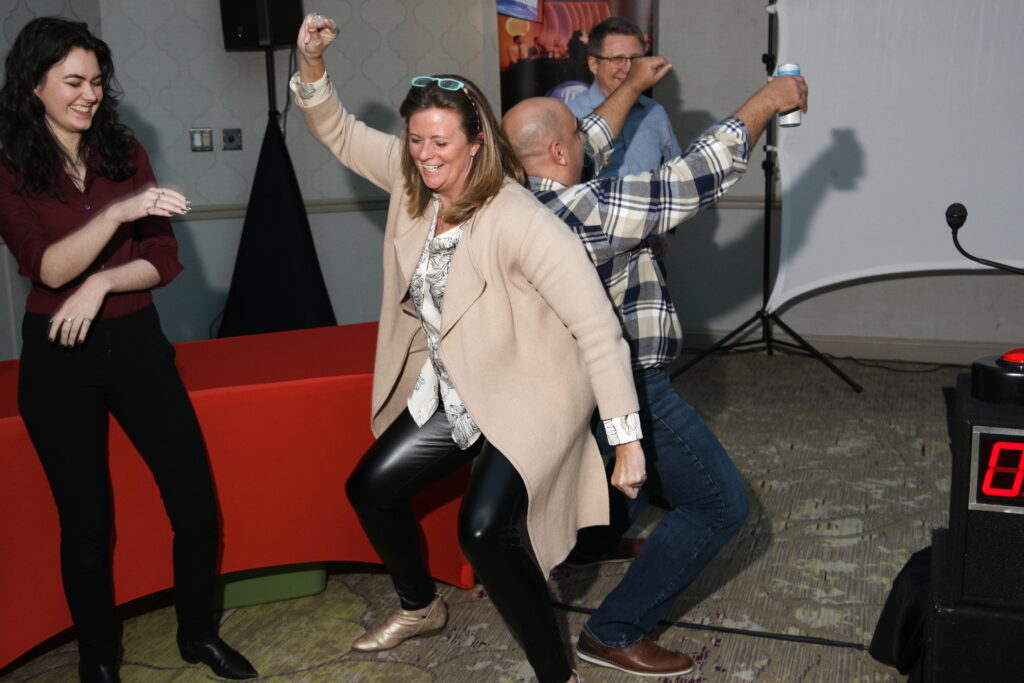
National Fun Day at Work
Creating a fun and relaxed atmosphere, party-style bonding activities can help large teams bond and connect on a personal level. These activities are designed to be enjoyable and engaging, allowing team members to let their guard down and interact with each other in a more casual setting.
Party-style bonding activities create a festive atmosphere that encourages playfulness and helps team members relax and connect on a more personal level. These lighthearted activities often create the most laughter and memorable moments, helping to humanize colleagues and break down formal workplace personas.
Wink Murder
Wink Murder is a fun game that asks an assassin to try to “murder” other players by winking at them. First, get the group in a circle. Next, get a folded piece of paper for each player and put a cross on one of them. The player with the cross is the assassin. This game transforms a large group into participants in a mystery game where an undercover “assassin” eliminates players with a wink, creating suspense and encouraging observation skills.
Snowball Fight
In Snowball, start by asking players to write the answer to five questions relating to a topic of your choosing on a piece of paper. Then, they crumple the papers into “snowballs” and engage in a playful exchange. This activity combines written reflection with physical activity as team members discover whose thoughts they’ve captured.
Group Cooking Class
Group cooking classes can be messy, but they are fun and extremely engaging for large groups. Teams work together around food preparation, requiring collaboration, time management, and creativity while resulting in a shared meal that celebrates the team’s collective effort.
These activities are not only fun but also serve as effective team-building exercises. They help in creating a more cohesive and collaborative team environment by encouraging interaction and camaraderie among team members.
Communication-Focused Bonding Activities for Large Groups

Enhancing communication within large teams is crucial, and specific bonding activities can make a substantial difference. Effective communication is key to the success of any team, and large groups are no exception. Activities that focus on improving communication can help bridge gaps between team members, foster a sense of unity, and enhance overall collaboration.
Three-Question Mingle
The Three Question Mingle is an engaging activity where participants create three thoughtful questions to ask their colleagues, encouraging meaningful interactions and helping team members get to know each other better. This activity promotes structured conversations and can lead to a more cohesive team environment.
Cross the Circle
Cross the Circle is a dynamic and engaging activity that reveals commonalities among team members. By physically moving across a circle in response to certain statements, participants can quickly identify shared experiences or characteristics, fostering a sense of unity and camaraderie.
Compliment Circle
The Compliment Circle is a powerful activity where team members acknowledge and appreciate the efforts of their colleagues. By sharing specific, positive observations, team members can cultivate a culture of recognition and gratitude, enhancing the overall team dynamic.
These communication-focused bonding activities directly address the challenges of effective information sharing in large organizations. By implementing such activities, teams can establish better communication norms and a safer, more psychologically secure environment that translates back to the workplace, improving day-to-day interactions.
Quick Bonding Activities for Large Groups with Limited Time
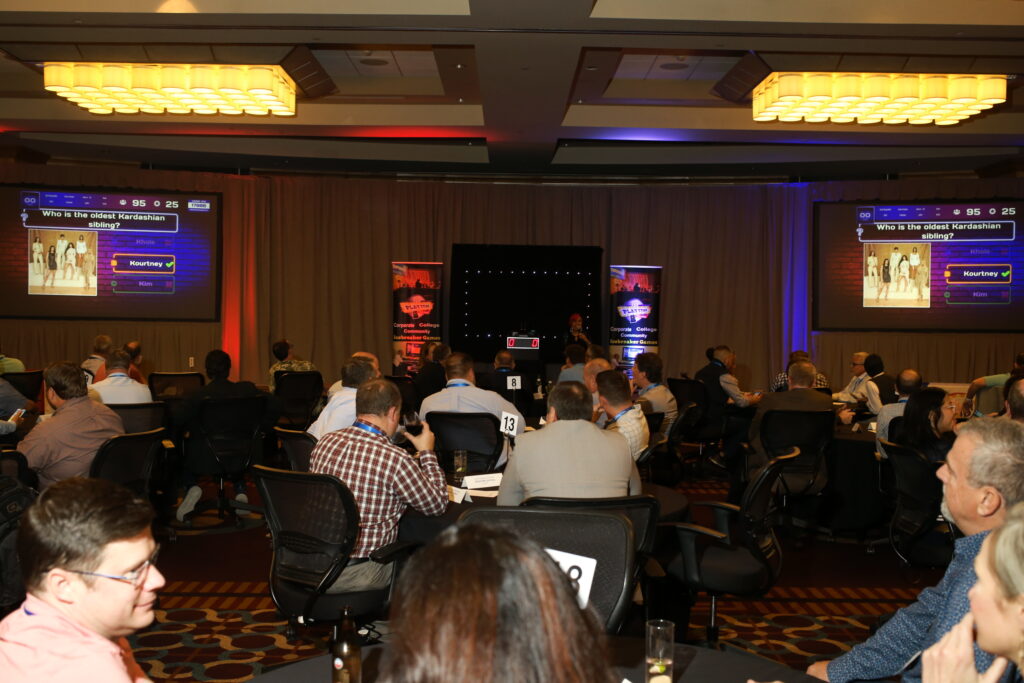
Time constraints shouldn’t hinder team building; here are some quick activities for large groups. In today’s fast-paced work environment, finding time for team building can be challenging. However, even brief team-building activities can create meaningful connections when strategically designed.
These quick bonding activities are perfect for large groups with limited time. They can be incorporated into regular meetings or used as energizers throughout a workday, providing team benefits without requiring dedicated event time.
Apple, Orange, and Banana!
Apple, Orange, and Banana! is a fast, active energizer that is great for teams of any size. Start by asking the group to form a circle and put their hands on the shoulders of the person in front of them. This activity creates immediate energy through physical movement and quick reactions as participants respond to fruit-based commands with specific actions.
One Word Method
The One Word Method invites everyone in the room to contribute a single word to a collective sentence that grows as you go round the group. This activity builds a collaborative story or sentence with each team member contributing just one word, creating a collective narrative that reflects the group’s thinking.
Bang
Bang is a group game, played in a circle, where participants must react quickly or face elimination. This activity tests reflexes and creates laughter as participants in a circle must quickly respond to being “targeted” by the “sheriff” in the middle, with elimination adding a competitive element.
These activities are designed to be engaging, interactive, and easy to understand, making them perfect for large groups with limited time. By incorporating these quick bonding activities into your team’s schedule, you can foster a more collaborative and connected work environment.
Strategic Team Building Activities for Large Groups

Effective team building for large groups requires a strategic approach that fosters alignment with company objectives. Strategic team building activities are designed to reinforce company culture while building strong relationships among team members.
Company Concentration
Company Concentration is a work-friendly version of the classic Concentration game. It involves creating cards with names and images of colleagues, as well as company facts such as the logo, mission statement, motto, and values. This activity tests and reinforces knowledge of the organizational structure, values, and history through a memory-matching game that engages large groups.
All the News
All the News encourages team members to get excited about projected goals by creating newspaper headlines announcing future achievements. In groups of 3-6, team members in a department share headlines of potential feats, promoting a shared vision and ambitious goal-setting.
History Map
History Map begins by rolling out a large piece of paper and drawing a timeline representing a shared project, experience, or the history of the group. This activity creates a collaborative timeline of team or organizational milestones, celebrating past successes while creating a shared narrative that connects team members to the company’s journey.
These strategic team-building activities help team members understand their place within the larger organizational context, fostering alignment with the company’s mission and strategic objectives. By incorporating such activities, organizations can promote a culture of collaboration, innovation, and shared purpose.
How to Measure the Success of Your Team Building Activities
Measuring the success of team-building activities is crucial for understanding their impact on the team. Team building is a continuous process necessary for forming stronger ties between workers and the company. When team building becomes a workplace staple, it streamlines onboarding, improves communication, boosts morale, increases trust, and encourages creativity.
To effectively measure the success of these activities, organizations can employ several strategies. One key approach is to gather feedback through surveys conducted before and after the team-building event. This helps capture changes in team dynamics, communication patterns, and engagement levels.
Bonding Activities for Large Groups Pre and Post-Event Surveys
Pre and post-event surveys are valuable tools for assessing the impact of team-building activities. By capturing quantitative and qualitative data, these surveys provide insights into how team members perceive the event and its effects on their work environment. Questions can be tailored to assess changes in communication, collaboration, and overall job satisfaction.
For instance, surveys might ask team members to rate their level of comfort communicating with colleagues before and after the event. This data can help organizers understand whether the team-building activity achieved its intended goals.
Observing Team Dynamics After Activities
Another crucial aspect of measuring success is observing team dynamics in the weeks following the team-building event. Managers and team leaders can note changes in collaboration patterns, communication effectiveness, and overall team cohesion. This observation can reveal the practical impacts of the team-building activities on workplace interactions.
By monitoring these changes, organizations can determine whether the team-building activities have had a lasting, positive impact on the team.
Long-Term Impact on Team Performance
Assessing the long-term impact of team-building activities on team performance is also essential. This involves connecting the investment in team building to business outcomes such as improved productivity, reduced turnover, and enhanced innovation over time. By tracking these metrics, organizations can justify the investment in team building and make informed decisions about future activities.
Creating a consistent measurement framework allows organizations to track improvements over time and identify which types of activities yield the greatest benefits for their specific teams. This data-driven approach ensures that team-building activities remain effective and aligned with organizational goals.
Conclusion – Bonding Activities for Large Groups
As we’ve explored, team-building activities for large groups offer numerous benefits that extend beyond the events themselves. Bonding activities for large groups represent a strategic investment in organizational culture and team effectiveness. The diverse range of activities presented in this guide offers options for every organizational context, team size, and specific objective, from improving communication to enhancing problem-solving capabilities.
Successful implementation of these activities requires thoughtful planning, clear objectives, and appropriate activity selection based on your team’s unique composition and needs. Regular team building should become part of your organizational rhythm rather than a one-time event. By integrating these activities into your team’s routine, you can maintain and strengthen connections among team members.
As remote and hybrid work arrangements become increasingly common, adapting team-building strategies to include virtual options ensures that all team members benefit from these essential bonding experiences, regardless of their location. The time and resources invested in bringing your large group together through structured bonding activities will yield returns in improved collaboration, enhanced morale, and ultimately, better business results.
In conclusion, by prioritizing team building and selecting activities that align with your organization’s goals, you can foster a more cohesive, productive, and engaged team. This, in turn, will drive success for your organization, making the investment in team-building activities a valuable one. By making team building a regular part of your team’s activities, you can ensure continued growth and improvement in your team’s performance over time.
